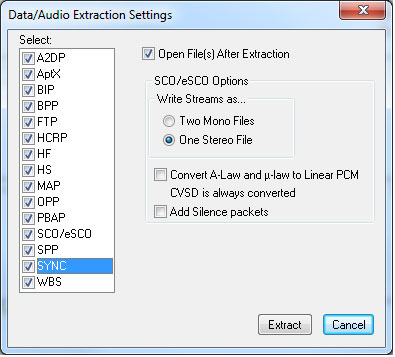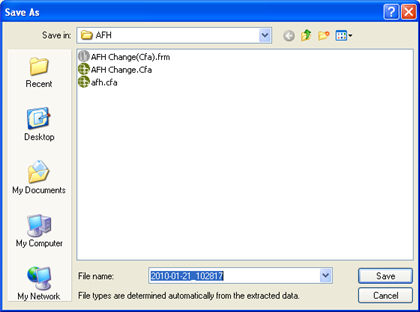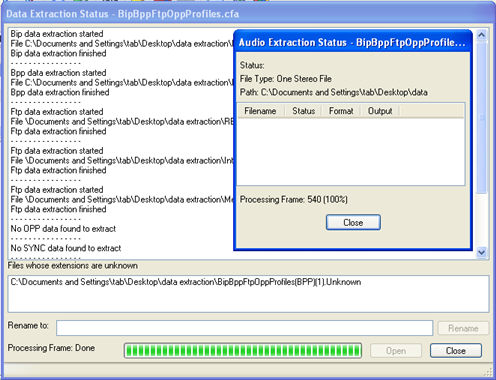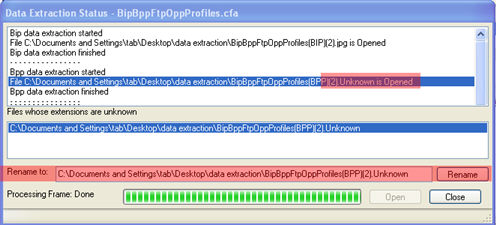Data/Audio Extraction
You use Data/Audio Extraction to pull out data from various decoded Bluetooth protocols. Once you have extracted the data, you can save them into different file types, such as text files, graphic files, email files, .mp3 files, and more. Then you can examine the specific files information individually.
-
You access this dialog by selecting Extract Data/Audio from the View menu or by clicking on the icon from the toolbar
 .
.
Data/Audio Extraction Settings dialog
-
Choose a checkbox(es) on the left side of the dialog to identify from which profile(s) you want to extract data.
It's important to note that if there is no data for the profile(s) you select, no extracted file is created.
-
If you want the file(s) to open automatically after they are extracted, select the Open File(s) After Extraction checkbox.
Note: This does not work for SCO/eSCO.
-
Click on a radio button to write the streams as Two Mono Files or as One Stereo File.
Note: This option is for SCO/eSCO only.
-
Select the checkbox if you want to convert A-Law and µ-law to Linear PCM.
CVSD are always converted to Linear PCM. It's probably a good idea to convert to Linear PCM since more media players accept this format.Note: This option is for SCO/eSCO only.
-
Select the Add Silence packets to insert the silence packets (dummy packets) for the reserved empty slots into the extracted file. If this option is not selected, the audio packets are extracted without inserting the silence packets for the reserved empty slots.
Note: This option is for SCO/eSCO only.
-
 Select Extract.
Select Extract.A Save As dialog appears.
The application will assign a file name and file type for each profile you select in Step 1 above. The file type varies depending on the original profile. A separate file for each profile will be created, but only for those profiles with available data.
-
Select a location for the file.
-
Click Save.
The Data Extraction Status and Audio Extraction Status dialogs appear. When the process is complete the dialogs display what files have been created and where they are located.

Data and Audio Extraction Status
If you selected Open Files(s) After Extraction, the files open automatically.
- If you did not select this option, you can open a file by simply double-clicking on the name.
Also, if a file type is unknown, you can select the file and it appears in the Rename to: text box.

Rename To in the bottom section of Data Extraction Status
Then you can rename the file, adding a file type to attempt to open the file.
When you are finished, select Close to close the dialogs.